Travel
Diverse terrain, well-maintained roads and light traffic make Slovenia superb for cycling. From picturesque country lanes, urban alleys and wide-open roads, to more demanding off-road mountain biking – there’s a bike tour out there for everyone.
Cycling in Ljubljana and its nearby marshland
Exploring the streets of Europe’s greenest capital by bike is a superb way of sightseeing. You get to see all the famous attractions, learn about the history and the people while getting a fair bit of exercise. Most of Ljubljana’s Old Town is a car-free zone and the city has wide network of bike lanes, which ensures easy cycling.
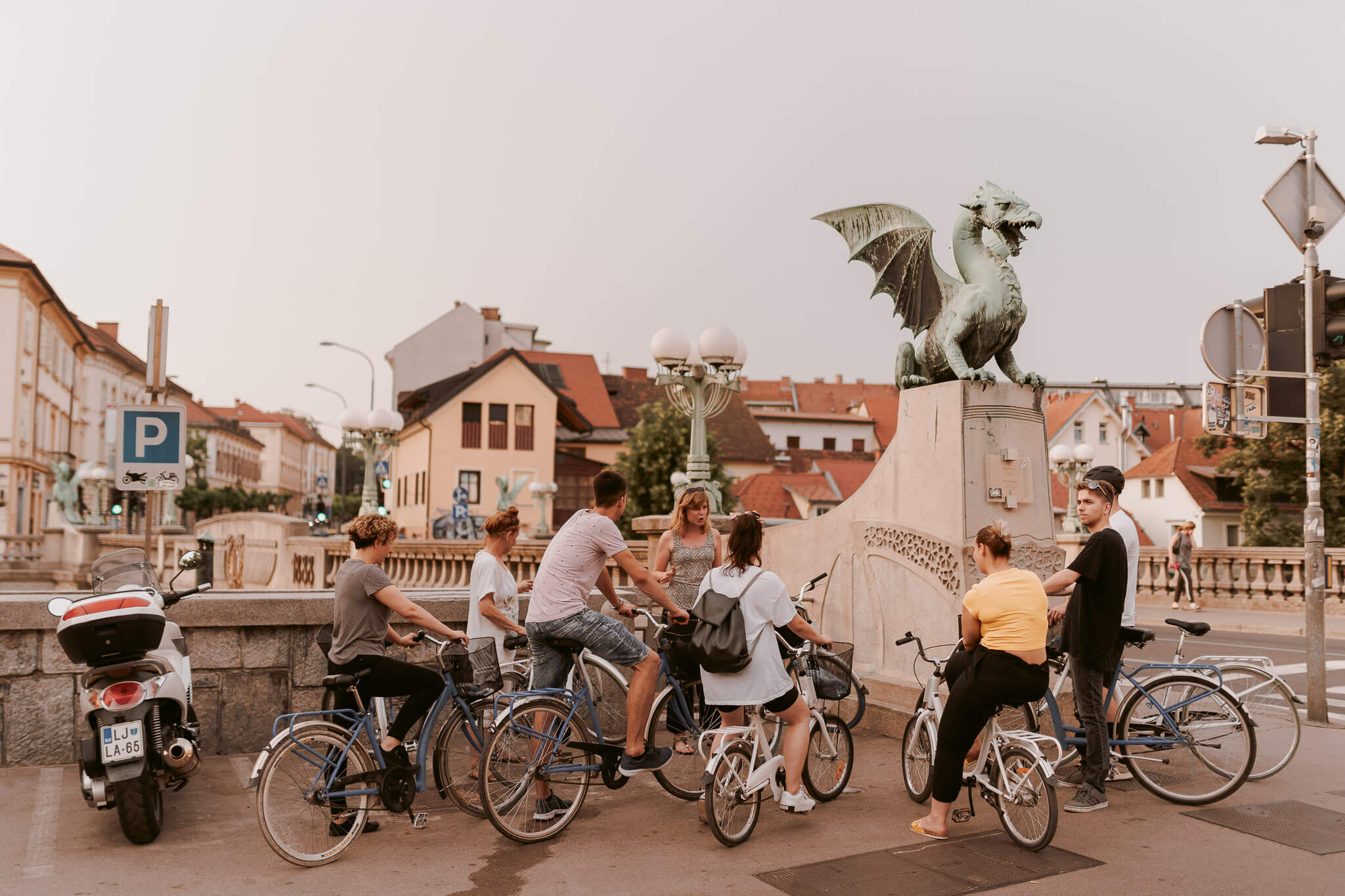
On the outskirts of Ljubljana there’s also a nature reserve and an anthropological wonder called the Ljubljana Marshes. The country’s largest marshland is home to incredible wildlife, a stunning gorge, and is packed with ancient history. In fact, it’s where Pillar-dwellers, the first known civilisation in these parts, used to live, and the oldest wheel dating back to 3,200 BC was found in the Ljubljana Marshes. Biking through the Ljubljana Marshes takes you into a tranquil haven you normally wouldn’t find on the doorstep of a capital city.
Sunlit vineyards and the Adriatic Sea
Cycling through the gorgeous rustic villages, miles of orchards and vineyards presents cyclists with the Mediterranean side of Slovenia. The Karst’s unique landscape is incredible to venture across by bike. Goriška Brda, also known as Slovenia’s Tuscany, is a fantastic place to go on a ‘bike & wine’ tour. It involves combining this wonderful sport with tasting Slovenia’s most prized beverage.
Slightly further south, the Adriatic coast presents the chance to cycle down the old seaside route from Koper to Izola. The salty air and pleasant climate are juts what the doctor ordered. Cyclists can stop at the Sečovlje Saltworks and Slovenia’s cutest seaside town of Piran. Slovenia’s coastline is quite short, so the journey only lasts a few hours and consists of easy flat trails, making it perfect for a family day trip.
A disappearing lake and glacial gems of the Alps
Slovenia’s wilderness is a fascinating. The tour down the Lake Cerknica trail takes you to one of Europe’s largest intermittent lakes. This relaxing cycling adventure also includes exploring the unbelievably charming karst valley of Rakov Škocjan where you can marvel at natural bridges and the lake’s resurgence location.
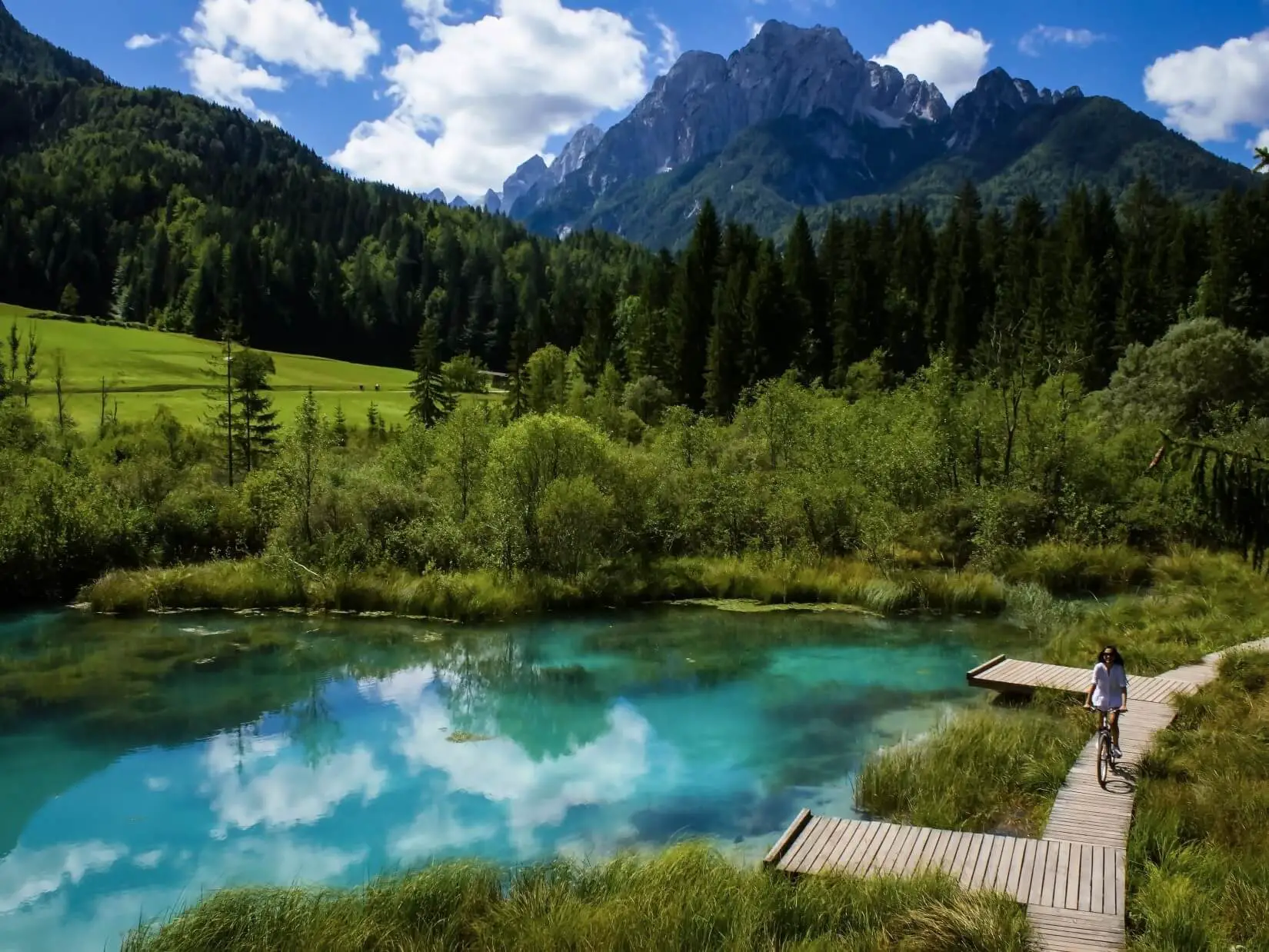
From the Karst to the mountains. The Zelenci Bike Tour takes place in the land of hilly terrain and breath-taking views. Zelenci translates to “Greens”, a most accurate description of the place. The emerald Fusine Lakes are home to one of the most scenic trails in Slovenia. Situated in a beautiful forested area, Zelenci offer amazing panorama of the Julian Alps. Although there’s a slight ascent toward the end of trail, most parts of the tour are flat. If you’re looking for a scenic cycling experience in the wild outdoors, this tour should be placed high on your list.
Less famous trails near the most famous lake in Slovenia
Lake Bled is Slovenia’s world-renowned Alpine landmark. Although cycling through the town of Bled and around its idyllic lake is a lovely experience, adding a trip into the surrounding countryside is an absolute must for cycling enthusiasts. Heading off the beaten path will introduce you to jaw-dripping views, mysterious forest trails, and refreshing riverside paths that give you an up-close-and-personal experience of this incredible region.
Mountain bike tours are all the rage
For adrenaline junkies, a colourful assortment of off-road trails can be found all over Slovenia. The pristine karst plateau of Pokljuka, with its endless pastures in the heart of Triglav National Park, is an excellent MTB tour.
Another high mountain plateau suitable for all levels of MTB thrill-seekers is Velika Planina. Vast pastures are dotted with grazing livestock and authentic shepherd huts. Bikers can have a break at one of the traditional cheese-making factories while enjoying the surrounding panorama.
Next on the list is Kranjska Gora, Slovenia’s most famous alpine resort. The route takes ascends high onto the “three-border” area between Austria, Italy and Slovenia. Despite being a relatively demanding run, the trail passes the spring of the Sava River and the aforementioned emerald jewel of Zelenci, affording incredibly rewarding views of the mountains.
The super fun fact about mountain biking in Slovenia is you don’t even have to travel deep into the countryside to do it. Awesome MTB trails can be found in Ljubljana. Trails run straight from the town centre up into the forested hills within the city limits. These routes are excellent for advanced mountain bikers who want to escape the hustle and bustle of the streets below.
The budget carrier easyJet, which was planning on starting a new service between London Luton and Ljubljana on March 30 2020, has announced that that flights will not begin until May 6 2021.
Four trips a week are still planned, on Mondays and Sundays (leaving Luton 07:15, leaving Ljubljana 11:05), Thursdays (leaving Luton 07:00, leaving Ljubljana 10:50) and Fridays (leaving Luton 12:55, leaving Ljubljana 18:15).
STA, 9 June 2020 - Cheating with tourist vouchers (turistični boni) will not pay off as fines are relatively high, from EUR 1,200 to 40,000 for legal entities and from EUR 200 to 600 for individuals, heard a news conference at which some details about the vouchers - a state aid measure to help Slovenian tourism survive the Covid-19 crisis - were presented on Tuesday.
The Economy Ministry held the news conference a day after the government specified the use of tourist vouchers, deciding they could be used in several instalments, not necessarily all at once, as initially planned.
The Financial Administration (FURS) will be in charge of paying tourism companies at which a tourist will want to pay with a voucher. The deadline for payment will be 30 days.
Peter Grum, FURS deputy director general, said this demanding project for FURS will have two goals - to provide a simple, fast and effective manner of payment and to prevent fraud.
There are some 2.05 million people with permanent residence in Slovenia eligible for vouchers, of whom around 1.7 million adults and 350,000 minors (under 18).
The former will receive a EUR 200 voucher and the latter EUR 50 to spend on bed and breakfast or only on bed at Slovenian tourism facilities until the end of 2020.
Grum said the goal of a simple, fast and efficient voucher payment is important so that the state aid comes to those who need it fast - the tourism sector.
He said there were several oversight mechanisms in place to prevent abuse, with random checks to be carried out by FURS and market inspectors.
For instance, vouchers could only be used at tourism companies incorporated no later than 13 March, the start of the epidemic.
Another safeguard is that vouchers will be available only electronically, as a credit in FURS's IT system.
Tourism companies will also have access to their guests' voucher credit in order to avoid a tourist using their voucher at some other accommodation provider.
Where there is no internet, at mountain huts, for instance, a tourist could pay for the accommodation with their own money and then claim a refund from FURS.
However a tourist voucher could not be used for accommodation payment on platforms such as Booking or Airbnb, explained Grum, adding that it could be used if booking was made through such platforms but the payment itself was made at the provider of accommodation.
Tourism companies will have a discretion to accept vouchers.
However, Economy Minister Zdravko Počivalšek does not expect them to reject vouchers, arguing a voucher is comparable to a credit card and the payment period will be generally even shorter.
He again defended the government decision to offer vouchers only for bed or for bed and breakfast, saying this was a conscious decision.
Making vouchers available for all inclusive services, "would lead to an even greater concentration at large tourism companies, which would worsen multiplicativity".
"Deciding between giving a hotelier a fish or a fishing rod, we decided to give them a fishing rod. And I believe many smaller companies will make an awfully big effort to be competitive with those who might be just waiting [for tourists] because they are located at well-known destinations or are better known already."
Tourist vouchers will be available between 19 June and 31 December, and FURS will have until the end of January 2021 to pay all the voucher-based bills.
They are one of the main measures from the third coronavirus stimulus package, passed at the end of May, and are estimated to cost the state EUR 345 million.
STA, 8 June 2020 - The government has specified the use of tourist vouchers (turistični boni), with which it wants to help the tourism industry survive the coronavirus crisis, deciding that a voucher could be used in several instalments, not necessarily all at once, as initially planned.
The decree on the use of tourist vouchers was adopted at a correspondence session on Monday, and will be presented to the press in more detail on Tuesday, the Ministry of Economic Development and Technology said in a press release.
Tourist vouchers are one of the main measures from the third coronavirus stimulus package, passed at the end of May. They are estimated to cost the state EUR 345 million.
Every permanent resident of Slovenia will receive EUR 200 to spend on bed and breakfast or only on bed in Slovenia until the end of 2020, with minors getting only EUR 50.
The vouchers will be entered as a credit of a permanent resident into the Financial Administration's (FURS) IT system and every resident eligible for it will receive an e-mail about it.
Under the decree adopted today, a tourist would tell a tourist facility upon registration that they would pay with the voucher.
The tourism company would then enter their data into FURS's IT system eDavki and the receive the payment of the service from FURS.
Voucher holders will however not be able to get cash for the voucher.
Sometime in the next week or so every adult and foreigner with permanent residency in Slovenia will be eligible for a €200 tourism voucher (turistični boni), and every child one worth €50, as a way to kickstart the summer season, when the industry will be relying on domestic tourists more heavily than usual. The “vouchers” can be used to pay for accommodation, and will be claimed by giving your Slovenian tax number to the provider (at least for the adults – it’s unclear, as yet, how the children will get theirs).
The money can be used at any businesses registered under the following categories:
- 55.100 - Hotels and other similar accommodation
- 55.201 - Holiday homes and resorts
- 55,202 - Tourist farms with rooms
- 55.203 - Renting private rooms to guests
- 55.204 - Mountain lodges and youth hostels
- 55,209 - Other short-term accommodation
- 55.300 - Camping activities
It’s in this context we’re presenting the following five properties in Soča, Bled, Bohinj and Kranjska gora - the home of holiday homes in Slovenia - all of which are on the books of Slovenia Estates and available for short-term rental as part of the scheme, and all of which come with an additional 10% discount for all weekly reservations made by end of June for all stays in June, July and August.
So take a look at the five properties below, two photos for each, click through to see more of the stylish interiors, learn more about the location, and start planning your next vacation.
Gorgeous, luxury renovated house, Bohinj: Four bedrooms, sleeps up to 7
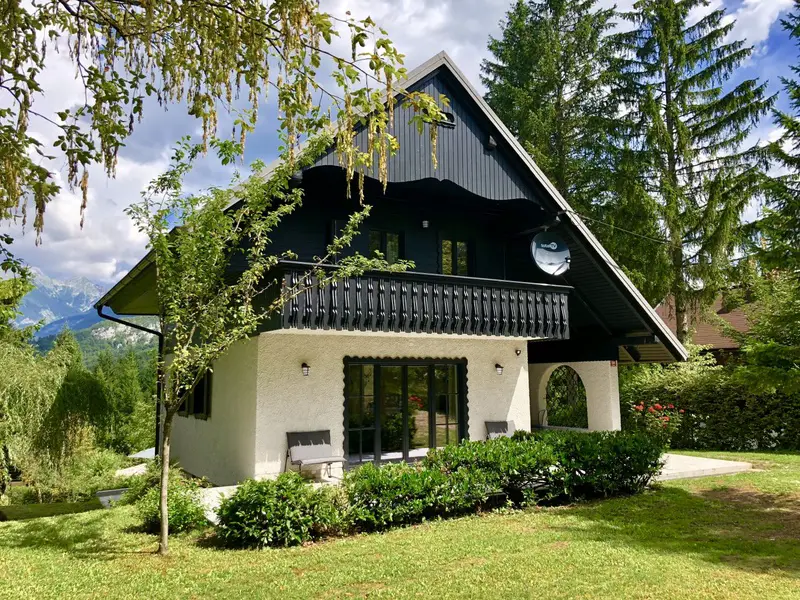
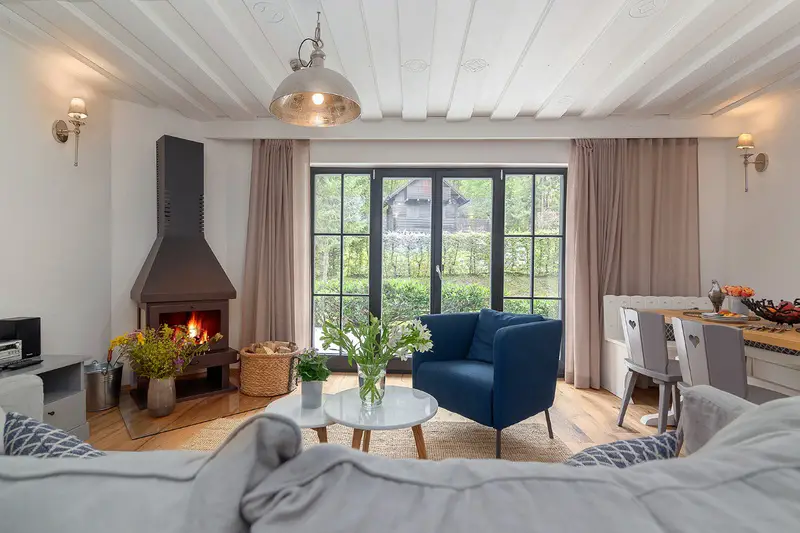
See more of this property here
Two quiet houses by the river - Bohinj: 3 bedrooms, sleeps 7
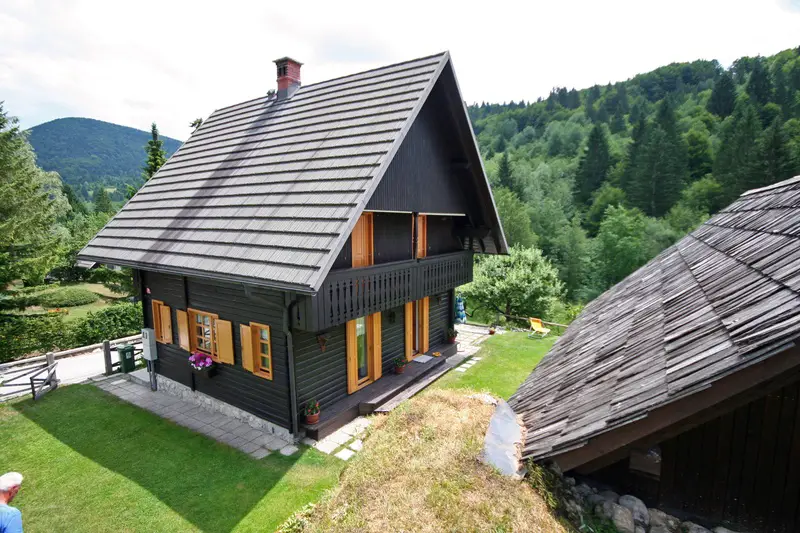
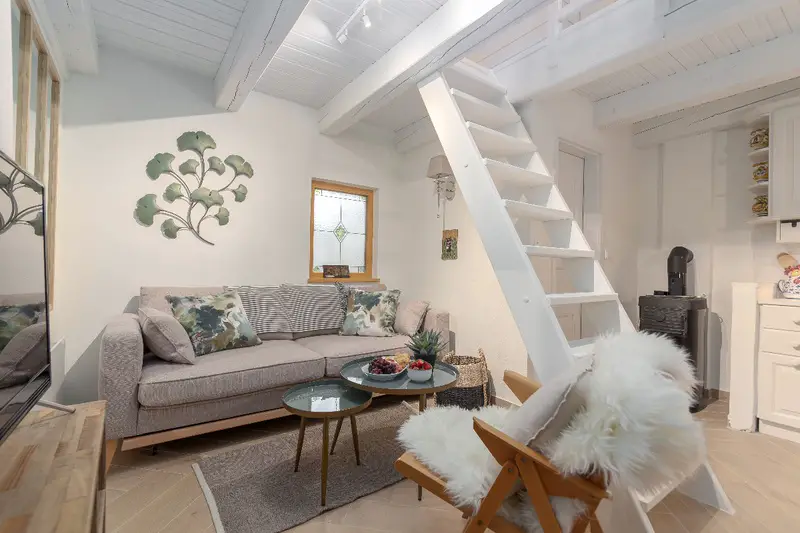
See more of this property here
Fabulous renovated luxury house, Soča: 3 bedrooms, sleeps 6
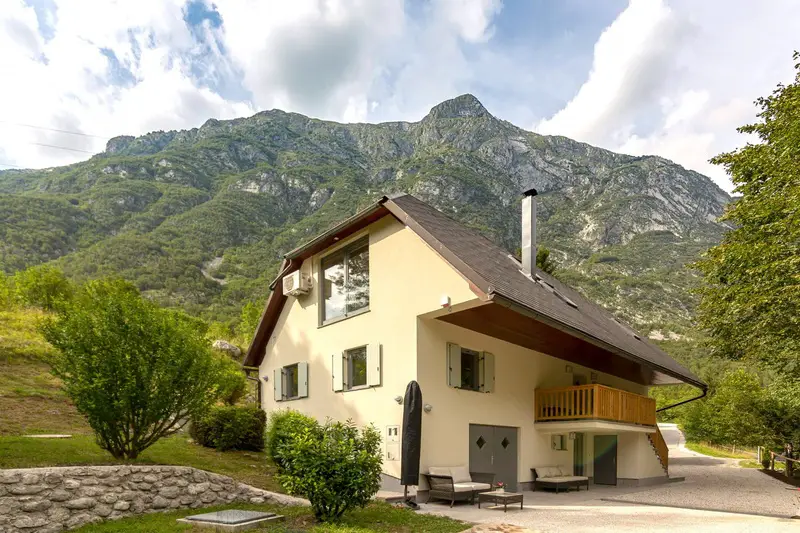
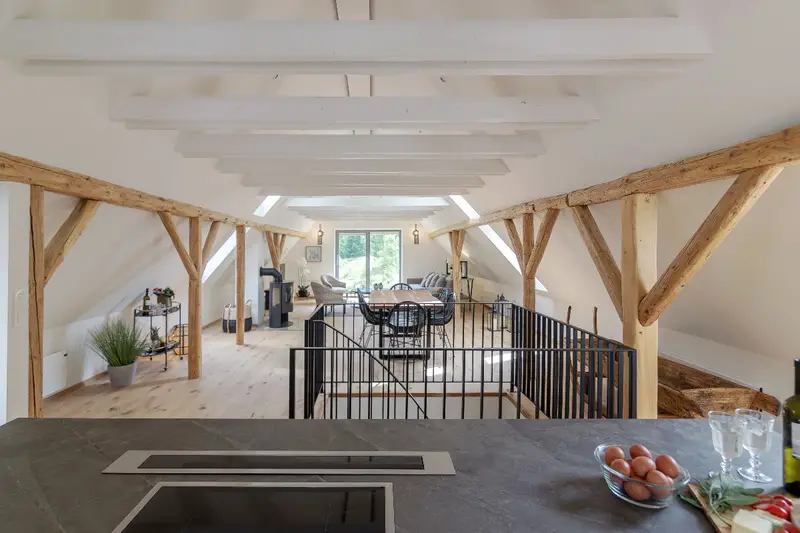
See more of this property here
Sweet renovated cottage in Bohinjska Bela, Bled: 3 bedrooms, sleeps 6
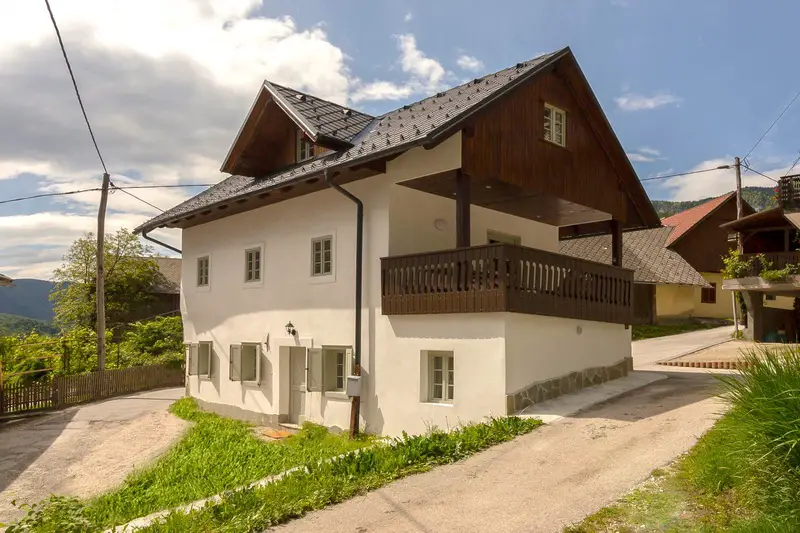
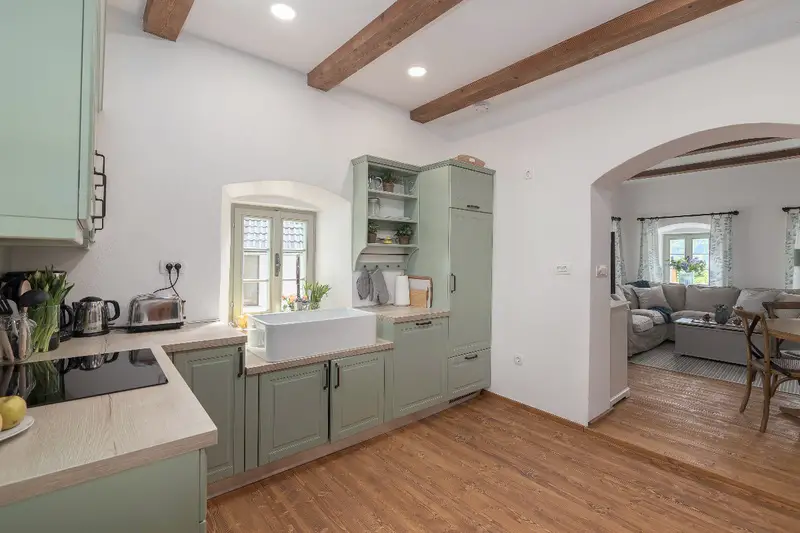
See more of this property here
Wonderful chalet close to Kranjska Gora: 3 bedrooms, sleeps 7
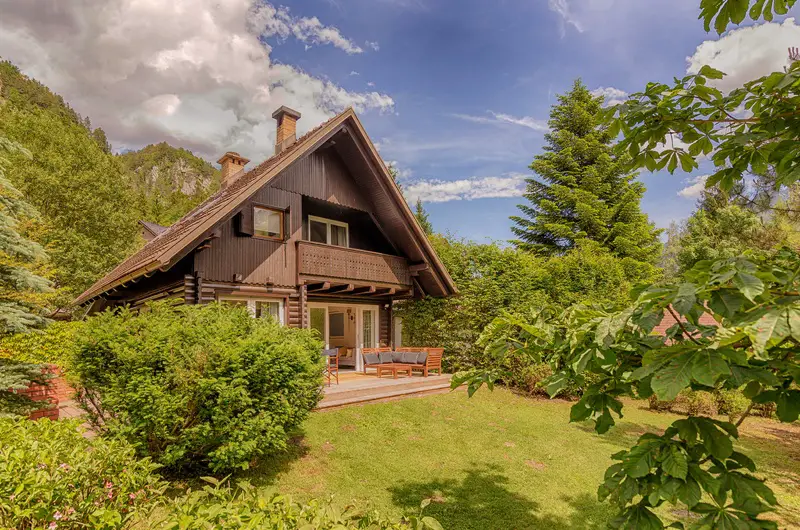
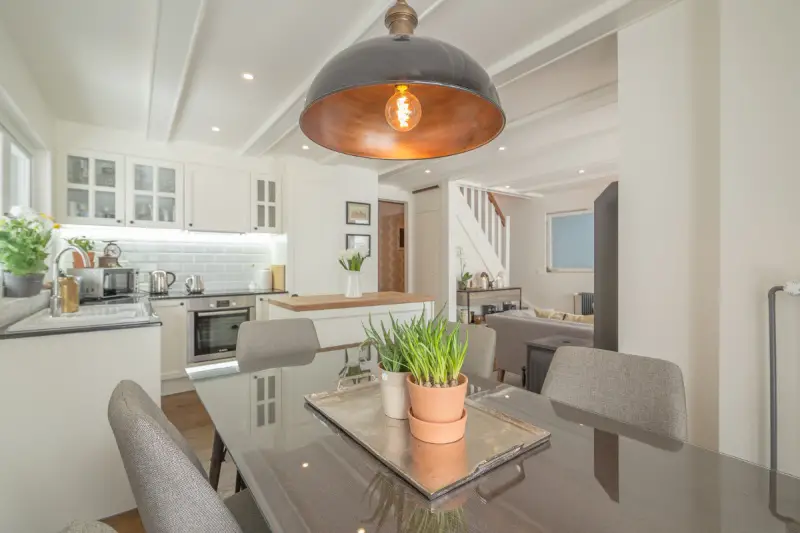
See more of this property here
If you'd like to see some other properties around Slovenia, available for sale or rent, in various locations and for various budgets, check out our real estate page
STA, 8 June 2020 - Citizens of 17 EU and non-EU countries may enter Slovenia without restrictions as of Monday under new border crossing rules adopted by the government on Sunday evening.
Citizens of neighbouring Austria, Croatia and Hungary have already been allowed to cross without any health restrictions under bilateral agreements.
Now, the list of countries whose nationals may cross freely has been expanded with Bulgaria, Cyprus, Czechia, Estonia, Finland, Germany, Greece, Iceland, Latvia, Lithuania, Liechtenstein, Norway, Slovakia and Switzerland.
The countries are placed on the list based on an epidemiological assessment by the National Institute of Public Health. If the situation in any of these countries deteriorates, they may be removed from the list.
Nationals of other EU and Schengen zone countries are still subject to a mandatory 14-day quarantine on arrival unless they fall under one of what are now 16 exemptions.
Until today one of the exemptions was confirmation of tourist booking, but that is no longer the case in the new decree.
Related: Slovenia Now Open to EU Nationals, No Quarantine Required (But Check the Small Print)
In yet another step towards the relaxation of the border regime, the government has relaxed crossing requirements on Slovenia's border with Austria and Hungary, which form internal borders in the EU.
It decided that crossing is permitted outside designated checkpoints, but only for Slovenians, Austrians (for the border with Austria) and Hungarians (for the border with Hungary), all others must still use designated checkpoints.
On the other hand, it instituted a mandatory 14-day quarantine for all arrivals from North Macedonia, regardless of nationality or residency.
The only exemption from the quarantine requirement are workers in international transport, persons conducting cargo transport to and from Slovenia or in transit, persons crossing Slovenia in transit and exiting no later than within 24 hours, and holders of diplomatic passports.
STA, 6 June 2020 - Slovenia will open its border with Italy very soon, Foreign Minister Anže Logar said on Saturday as he hosted his Italian counterpart Luigi Di Maio in Ljubljana. Though not naming a date, Logar repeated several times that he looked forward to 15 June with optimism.
Logar said that Slovenia followed the situation in Italy on a daily basis and that it would open its border as soon as the health situation there allows it.
He said that the situation in Italy was improving very fast, infection-wise. There were, however, differences between regions, but all have made significant progress, said Logar.
He added that the opening of the border will have to be green-lighted by the National Institute for Public Health (NIJZ) before this decision is made by the government.
Minister @AnzeLog je italijanskemu kolegu @luigidimaio izrazil sožalje za vse žrtve epidemije in priznanje za učinkovite ukrepe, ki jih je #Italija uvedla za zajezitev #covid19. V času po pandemiji moramo za obnovo gospodarstva v Evropi stopiti skupaj.#StrongerTogether #EU pic.twitter.com/vJd3XTH8Tz
— SLOVENIAN MFA (@MZZRS) June 6, 2020
"I'm looking forward to 15 June with optimism," he said several times during the joint statement with Di Maio.
Di Maio meanwhile thanked his host for showing optimism and underlined that the border opening for tourism was vital for the economies of both countries.
The Italian minister also said that a high level of caution will be needed in the next 10 days to prevent the number of coronavirus infections from increasing once again.
Logar said that Italy was a very important neighbouring country for Slovenia and a key economic partner, while bilateral relations are at a high level.
Turning to EU issues, Di Maio said Europe needed to become a place that unites, not divided. It has to become more united to cope with the problems ahead, both economic and health issues, he said.
The pair also discussed the forthcoming return of National Hall in Trieste to the Slovenian minority there, en event that Logar described as a landmark. "This will be an important landmark that will lift bilateral relations to a new level."
Di Maio added that as Italy changed electoral legislation, the Slovenian minority must be secured a place in parliament.
He also met Slovenian President Borut Pahor, with the latter pointing to regular contacts with his counterpart Sergio Mattarella. The presidents will attend the ceremony to mark the 100th anniversary of National Hall arson by Fascists together.
Pahor's office also said in a press release that cooperation between the Italian government and local authorities will be key so that everything is ready for the return of the National Hall to the Slovenian community on 13 July.
STA, 3 June 2020 - The Slovenian Tourism Board (STO) presented on Wednesday a new concept of attracting guests to Slovenia. The country will be promoted as Green&Safe, committed to responsible, safe and green tourism.
Tourist destinations and tourist services providers in Slovenia will carry the Green&Safe label, which means that they follow the standards for responsible travelling.
Thus, the STO would like to preserve and increase trust in the I Feel Slovenia brand and attract guests to the country, whose tourism could see about 70% drop in demand this year.
"In these times of uncertainty because of the new coronavirus, the success of the tourism sector depends on guests' trust, their knowing that they can spend their holidays here without jeopardising their health and safety," the STO wrote.
The standards for responsible travelling had been drawn up by the STO in cooperation with the Economy Ministry, the Slovenian Hospitality Chamber (TGZS) and the National Institute for Public Health (NIJZ).
Posters and flyers are already available for tourist facilities to use and distribute.
Slovenian tourist sector largely depends on foreign guests, who generate 75% of revenue, but this year, efforts have been made for it to be salvaged by domestic guests, who will receive tourist vouchers to be used in Slovenian accommodation facilities.
Borders are also gradually opening, so an increase in foreign guest arrivals is expected soon as well. This year, the tourist sector is mainly counting on guests who will be arriving by car.
STA, 2 June 2020 - Economy Ministry State Secretary Simon Zajc has announced that the government will adopt rules for the use of the long-awaited tourism vouchers this week, and that the system is expected to be up and running not later than at the start of summer school break in any case.
Speaking on an afternoon show at the public broadcaster RTV Slovenija, Zajc said that how quickly the system was set up depended on the Financial Administration (FURS).
Aimed at helping the Slovenian tourism sector recover from the coronavirus epidemic, the vouchers are part of the latest legislative package.
Minors are set to get EUR 50 vouchers and adults EUR 200 vouchers in electronic form, which may be used to pay for accommodation and breakfast in hotels, self-catering units, camps, agritourism farms and other similar facilities.
It is FURS which will reimburse the provider's the costs, while vouchers will have to be spent in their entire sum at once, and not later than on 31 December.
The state secretary said that details regarding the vouchers would be determined in a government decree, which is expected to be adopted as early as this week.
"Then it is up to FURS to set up the system. We would like to see and we encourage FURS to do this as soon as possible, but in no case will this happen later than at the start of school holidays," Zajc added.
The last day of school for primary school children is 24 June.
The measure will cost the state EUR 345 million, and visitors who cash in their vouchers are expected to spend an additional EUR 172 million for services they will not be able to cover with them.
STA, 1 June 2020 - Large hotels and spas in Slovenia have been given the green light to reopen on Monday after being closed for almost three months due to the coronavirus epidemic, however the majority remain closed. Some will start welcoming guests at the end of the week, others later on. Border reopening will be a key factor, say hotels.
After allowing accommodation facilities with up to 30 rooms to reopen on 18 May, the government has now given the go-ahead to all hotels regardless of their size, as well as spas, health and fitness centres, and swimming pools.
A number of hotel managers have pointed out though that lifting border restrictions will be a key factor for resuming services since hotels could not be filled to sufficient capacity to guarantee profit without foreign guests.
The border situation is currently uncertain and many believe that reopening in the current circumstances could only aggravate their financial situation.
Hotels in the northern Gorenjska region have not yet reopened. The Bled Sava hotels network, comprised of six hotels, will reopen only one of them this year. The renovated Hotel Park will again welcome guests on 25 June.
Meanwhile, the Triglav Hotel in Bled reopened today. The facility with 22 rooms could have done that sooner but it had opted to wait a bit. There have been some bookings for the end of this week made by Slovenian guests, said the hotel.
Hotels in Kranjska Gora, another popular destination in the north, also remain closed for now. The HIT Alpinea group, the main hotel operator there, plans to start reopening its accommodation facilities gradually, one at a time and depending on occupancy rates.
The Bohinj Eco Hotel will start welcoming guests again in late June or when the restrictions on the border with Austria are lifted.
The casino business in the western Goriška region has not yet resumed - Slovenia's leading gaming company HIT could have already reopened its casinos and hotels, but has instead decided to wait for the reopening of the Slovenian-Italian border since a vast majority of its guests (95%) come from Italy.
Hotels in the coastal town of Piran are gradually going back to normal as well - Hotel Piran will reopen in two phases, starting between 5 and 7 June and wrapping up the transition period between 11 and 14 June.
Phones were ringing off the hook this week with people showing great interest in holidaying at Piran, said the hotel, pointing out that callers were mostly asking about the current situation and border crossing options.
When it comes to spas, Terme Olimia is resuming business as usual on Friday. The Aqualuna waterpark will meanwhile reopen on 12 June.
The spa in eastern Slovenia expects quite a lot of guests mostly due to a promotional offer launched in early May.
Sava Hotels, the country's largest hotel operator, will reopen its hotels across the country gradually from the end of this week, while the campsite Kamp Lucija in Portorož opened on Saturday.
The Zdravilišče Laško spa hotel will also reopen on Friday, mostly welcoming guests seeking rehabilitation treatments, followed by reopening the swimming pool complex on 15 June and the Thermana Park on 19 June.
The latter capitalised on business and sports events in the pre-corona times, but will now have to deal with a lot of those events being cancelled. The hotel is hosting smaller, one-day events this week though, the first after the epidemic.
The Terme Ptuj in north-east also plans to reopen most of its facilities on 15 June, except for indoor swimming pools and saunas, which are to stay closed until further notice.
Hotels in Rogaška Slatina, another famous spa resort in the country, will go back to normal a bit later, starting with Grand Hotel Rogaška on 24 June.
The Terme Zreče spa, near Maribor, will see the reopening of accommodation facilities as early as Wednesday. Cafes and restaurants will be reopened gradually, while saunas will remain closed until health authorities release relevant guidelines, presumably in mid-June.
The Maribor Terme spa plans to reopen only one of its hotels for now - Mercure City Center will welcome guests again on 15 June. Visitors to Slovenia's second largest city could also spend the night at Hotel City, which reopens today.
Accommodation facilities across the country may rely on additional revenue in a form of holiday vouchers which are to be given to all Slovenian citizens. The measure, intended to boost tourism, is part of the third stimulus package, adopted on Friday, however it has not yet entered into effect.
Slovenians will be able to start spending the vouchers (worth EUR 200 for adults and EUR 50 for minors) at the facilities of their choice by 15 June at the latest, said government spokesman Jelko Kacin at today's briefing.
The vouchers could be used until the end of the year. The government is finalising relevant details.
In the wake of the Covid-19 epidemic being effectively over today, most fitness centres across Slovenia reopened as well. Individual and group workouts are allowed, with users required to heed preventive measures.
The Ljubljana GYM24 fitness centre, the only gym in the capital that is open 24/7, reopened when the clock struck midnight.
Among the first gyms to resume services were also Bodifit (BeFit) centres in Ljubljana, Maribor, Celje, Kamnik and Domžale. The centres call on their visitors to enter the facilities one by one, use hand sanitisers as well as face masks whenever they are surrounded by a greater number of people.
Showers are still off-limits so gym users are urged to bring extra clothes with them. They will also be required to sign a statement on their medical status.
Gyms have adapted to the new post-corona reality, including by setting workout equipment at least 2 metres apart from others. The Celje Top Fit gym has meanwhile amended its opening hours, introducing a break between the morning and afternoon shifts to disinfect all the equipment and air the rooms.
STA, 30 May 2020 - The Foreign Ministry has amended somewhat a decree on quarantine requirement for people coming to Slovenia from third countries by adding new exemptions. One of them are people with a permanent or temporary residence in Slovenia.
The decree adopted on Tuesday was amended after the ministry received numerous requests and calls regarding the obligatory quarantine.
Together with the National Institute for Public Health (NIJZ) and the Health Ministry, the Foreign Ministry again looked into the possibility of someone bringing in the virus from third countries and established that some third countries in the region have favourable epidemiologic situation at the moment, so the decree was amended on Friday.
Under the new rules, Slovenian citizens and foreigners with a permanent or temporary residence in Slovenia will not have to go into quarantine. Also exempted from the 14-day quarantine requirement are persons attending a funeral of a relative in Slovenia and those coming for a medical examination or procedure.
Those merely transiting Slovenia in a day, and those who attend kindergarten or school in Slovenia as well as those doing scientific and research work will not be quarantined either if they present a document showing that they tested negative for the virus in the last three days.
People who transport cargo from or into Slovenia from third countries, those transiting the country transporting cargo, and those who work in international transport are also on the list. So are diplomatic personal and members of the civil protection.
This means that a Slovenian citizen returning from a several-day business trip to Serbia will not have to go into quarantine, and neither will foreigners coming to Slovenia on business from EU or Schengen countries.
However, if they will want to spend a few days in the country, they will have to submit a certificate of a negative coronavirus test and give their address in Slovenia.
Citizens of third countries who want to come to Slovenia on business will not be quarantined if they present a statement by the Economy Ministry that the quarantine would cause a major social or economic damage.
The first plane to touch down at Ljubljana airport after two months and a half of severe air traffic restrictions was Air Serbia's on Friday. Half of the 24 passengers were ordered a 14-day quarantine based on the previous decree.
The Interior Ministry said the quarantine orders for those persons remain in place but if there were any changes to the situation, the Health Ministry should be notified.
All our stories on coronavirus and Slovenia





